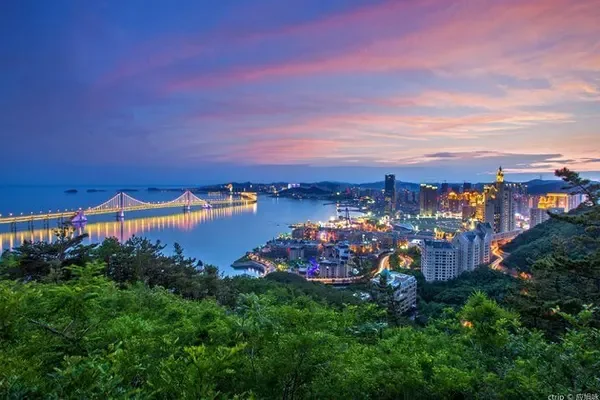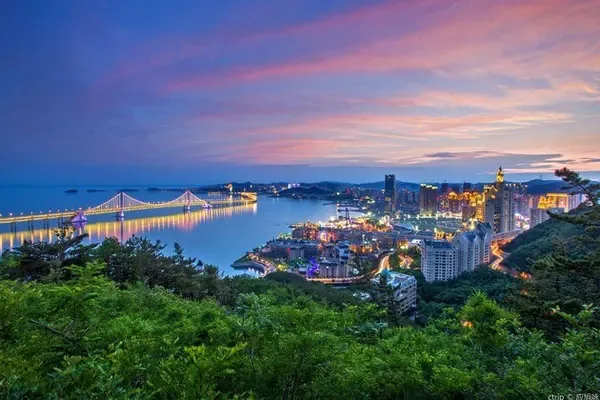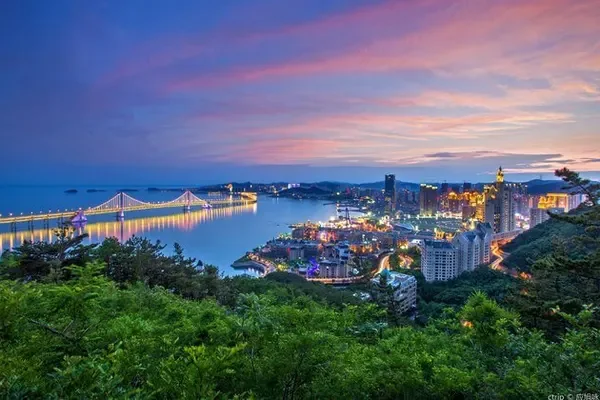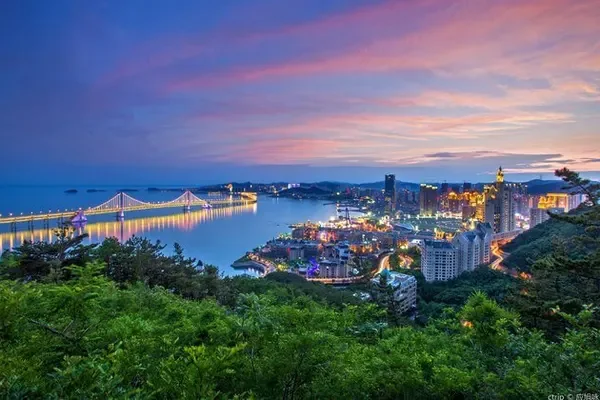
©Original pictures (The copyright of the pictures in this picture and text belongs to Jumbo Huang, please contact the author for reprinting in any form: Jumbo_Huang@126.com, Wechat ID: Jumboheritagelist or Huang_Jumbo). All pictures in this blog are declined to reprint any non-complete screenshots! Please be self-respecting, and especially decline all kinds of hand-crafted reprints with superimposed watermarks on commercial websites! All rights reserved in this work.

The pictures in the works shall not be directly or indirectly used in any commercial activities for the purpose of profit, and offenders shall be investigated. The content of some chapters in this picture and text may be partly from the public network or public domain, and it is only used for personal study, research and appreciation, and has no clear commercial use. Sources of original photos: "Huang's Ancient Architecture Encyclopedia" and "Traveling around in search of beauty" and "Huang Jian's blog photo collection" Notice: Image copyright belong to Jumbo Huang, Part of Text citation resources was from public domain)

People without goals, others want to give you a hand, but they don't know where your hand is. "When a person reaches the age of 35, should he pursue his dream or do a stable job?" My first reaction at the time was, isn't the job before the age of 30 just to pursue a dream?

After I got out of Pingyao Railway Station, I found that there was actually a tourist information center at the station. An English-speaking girl was answering questions for a foreigner. want to take a car,

But there was only a bus going to Shuanglin Temple nearby, and a black and thin guy came over. He offered ten yuan to take me to the gate of the ancient city. I thought it was very far away, so I didn’t bargain with him, but it turned out that I arrived within a few minutes after getting on the bus. I felt cheated, but at least he took me to the gate of the ancient city, next to the Huiwulin Hotel,

The lady at the front desk told me that the standard price for a double room is 88 yuan, with a bathroom. I feel that this price is neither expensive nor cheap, so I went shopping for a long time and only saw a hotel called Shuiyunjian in the ancient city. It ranges from 50 to 500 yuan,

But all rooms do not have private bathrooms. I hurried back to the Huiwulin Hotel at No. 1 Xiguan Street, Pingyao. After paying a deposit of 200, I checked into room 220. After putting down my package, I went out lightly. I went to the street to find a place to eat. After shopping around, I found nothing delicious. place,

Reluctantly, I walked to the beef shop near the hotel and ate a bowl of sliced noodles with a very bad taste. It cost 12 yuan. I couldn't help but miss the mutton soup with mutton steamed buns that I ate in Yongji at noon today. It was full and delicious. Later, I entrusted my family to help me check the tickets to Qi County, which are available every afternoon and evening, and it takes 15 minutes from the train.

Later, I walked into the ancient city for a visit. The commercialization here is too serious. There are battery cars and cars driven by some privileged classes everywhere. There are no lights on many streets in the ancient city. After shopping for a while, I returned to the hotel. I wanted to watch TV after taking a shower. But the signal was too poor, and later I began to lie in bed and study the history of the ancient city.

Pingyao County is surrounded by Jiexiu, Qixian, Wenshui, Fenyang, Qinyuan and other counties and cities. It is the prototype of the ancient county town in the Ming and Qing Dynasties that is well preserved in China. The ancient city of Pingyao has a history of more than 2,700 years. It is a national historical and cultural city and a world cultural heritage.

Pingyao is a large cultural relic county in Shanxi Province, with more than 300 historical sites. The Rishengchang Bank of "Huitong Tianxia" is known as "the originator of China's modern bank", Shuanglin Temple is praised by experts as "the treasure house of oriental colored sculpture art", and the Hall of Ten Thousand Buddhas in Zhenguo Temple is the earliest and most precious wooden building in China one.

The ancient city of Pingyao, the ancient city of Lijiang in Yunnan, the ancient city of Langzhong in Sichuan, and the ancient city of Shexian in Anhui are known as the "four ancient cities" that are the best preserved in China. Up to now, I have been to three of the four ancient cities, all of which are heavily commercialized scenic spots. It is said that during festivals,

The crowds visiting from Beijing to Pingyao blocked the expressway. The ancient city of Pingyao is currently considered the most complete ancient county-level city in China, but it is hard to say whether it will be preserved so well in the future.

In the Western Zhou Dynasty, "here" was divided along the lines of no counties and towns, but when Yin Jifu led his army to the Northern Expedition, he "garrisoned here" and built fortifications was the most important thing. After Qin Shihuang unified China, he abolished the feudal state, implemented the system of prefectures and counties, and set up flat pottery in the county, which belonged to Taiyuan County.

During the Han Dynasty, Pingyao was the land of Jingling, Zhongdu County and Wu County. During the reign of Emperor Taiwu of the Northern Wei Dynasty, Pingtao of the Han Dynasty was moved to the west of Jingling City. Because of avoiding the name taboo of Emperor Taiwu Tuobatao, Pingtao was changed to Pingyao and moved to the present site in the east. center of.

During the Sui and Tang Dynasties, in order to defend against the invasion of the Turkic people in the north, Shanxi, as an important military town with "outside and inside mountains and rivers", had a special important strategic position. The test of self-defense war.

At the beginning of the Northern Song Dynasty, Zhao Kuangyin sent troops to burn Pingyao City in order to pacify the Northern Han Dynasty. During the Tang and Song Dynasties, the commerce and trade in the ancient city of Pingyao began to take shape. From the Yuan Dynasty to the ninth year (1349), the west of Shaxiang Street in the city was still outside the city, where "mulberry gardens became forests, and a hundred birds contended for song". In the second year of Hongwu in the Ming Dynasty (1369), floods caused disasters, and the west city wall was washed away, leaving red sand behind. When the city was expanded the next year,

The city wall moved westward, and there was Shaxiang Street. In the third year of Hongwu in the Ming Dynasty (1370), the city wall of Pingyao began to be expanded on the basis of the "old city" with a circumference of "nine miles and eighteen steps". One zhang, six gates,

There are two in the east and one in the north and one in the south. The city wall has been surrounded by bricks and stones. After the middle of the Ming Dynasty, the prosperity of the city's economy and the growth of the population prompted the city's buildings to expand outward. "Another city wall outside.

The wall body is rammed with plain soil, the wall is about six meters high, and a parapet wall is built on it. There is an arched city gate between the walls on the left side of the Dragon King Temple, which is commonly called "Dongguan Gate". "Dongguanmen" faces the bank of Huiji River and looks north at "Jiuyan Bridge".

In the middle of the Ming Dynasty, the commerce and trade of the ancient city were further developed. During the more than 500 years of the Ming and Qing dynasties, the Pingyao City Wall underwent 26 repairs and additions, forming the existing existing scale. That is, the circumference is 6162.68 meters (consistent with the "circumstances of twelve miles, eight minutes and four centimeters" in the early Ming Dynasty). In Sanhuali of Pingyao City, there are six square gates, one in the north and one in the south, and two in the east and west. It is shaped like a "turtle" with its head south and tail north. The city is also called Turtle City.

As the symbol of the city, it existed in the Ming Dynasty and was rebuilt during the Kangxi period of the Qing Dynasty. The four main streets, eight small streets, and seventy-two streets in the ancient city also formed during the Ming and Qing Dynasties. The Pingyao County Government, which reflects the county's establishment, was built in the sixth year from Yuan to Zhengzheng (1346). .

Residential houses and shops and workshops, the main body of the ancient city, were gradually built in the early 15th century with the gradual formation of the central city of Shanxi merchant culture. In the middle of the Qing Dynasty, the commercial trade of the ancient city flourished for a time, and it developed into the commercial and financial center of the whole country. In the third year of the Qing Dynasty (1823), Rishengchang Bank was born.

The rapid rise of the Pingyao Merchant Gang further promoted the development of trade in the ancient city, which lasted for more than a hundred years. After the seventh year of the Republic of China, highways and railways were opened one after another, which promoted the opening of Pingyao. A large number of foreign goods flowed into Pingyao and occupied the market. In February 1938, Japanese invaders invaded Pingyao City,

The ancient city experienced eight years of burning, killing and looting by Japanese fascists, and many buildings were either destroyed or converted into military facilities. In the middle of the 20th century, Fuguoguan City finally encountered constructive destruction. In 1986, the ancient city of Pingyao was announced by the State Council as a national historical and cultural city. On December 3, 1997, it was included in the "World Heritage List" by the UNESCO World Heritage Committee.

On October 24, 2014, there was smog in most areas of Shanxi a few days ago, but today it can be said that God helped me, and the sky in Pingyao was as clear as blue and cloudless. I went out at six o'clock in the morning. After checking out, I temporarily stored the big backpack in the hotel.

Then I went out alone. It was pitch dark outside. I couldn’t find a restaurant open outside West Street. I walked into Pingyao Ancient City and found a restaurant on the old street. I bought beef buns and soy milk. It’s a scenic spot. The restaurant, the food is really tasteless, I almost threw up and it cost me 11 yuan,

I walked to the gate tower of West Street and started to walk around the city for a week. I conservatively estimated that I would have to walk at least six kilometers. I walked counterclockwise. While walking, I saw the ancient city wall of Pingyao. There was a road next to it. Soon I saw the sunrise.

There are people doing morning exercises nearby, there are aunts dancing in the square, there is some dust on the road, and there are many cars. There is a large area outside the ancient city of Pingyao that is under construction. I thought the ancient city wall of Pingyao was well preserved, but it is not the case.

When I walked to the foot of the wall, I found that many sections of the city wall were cracked, and the protection was poor. Many city walls were tightened with iron wires, and the bricks of many inner walls were missing, exposing the layer of rammed earth. I didn’t see a specific maintenance plan. The four towers of Pingyao Ancient City were suspected to be rebuilt later. I circled around half a circle from the outside, and then entered the inner city from another gate tower with many tourists, passing the Confucian Temple and Chenghuang Temple. Scenic spots have to be charged, there are people everywhere, there are a lot of battery cars and cars, walking is not smooth, it is annoying,

The streets are full of handicrafts and specialty products, and the goods are all the same. It feels very boring to go shopping for a long time, so I go out of the city again. There are too many people here, the streets are too crowded, I still like to hang out in Jingzhou Ancient City or Xiangyang City.

The ancient city of Pingyao is the most well-preserved ancient county in China. It is an outstanding example of Chinese Han nationality cities in the Ming and Qing Dynasties. In the development of Chinese history, it has shown people an extraordinary culture, society, economy and religion. A complete picture of development.

The existing city walls of Pingyao City were rebuilt on a large scale on the basis of the old city of the Western Zhou Dynasty in the third year of Hongwu in the Ming Dynasty. After that, they have been repaired dozens of times, but they still generally maintain the style of the early Ming Dynasty. They are precious objects for studying the construction of ancient Chinese cities. One of the materials. The streets in the city are vertical and horizontal, and the pattern is orderly. As the financial center of China in the late Qing Dynasty, it had a great influence.

The city of Pingyao is square in shape, with a perimeter of 6163 meters. The south city wall is built along the Zhongdu River, and the other three sides are surrounded by straight lines. The city wall is 8 to 10 meters high, 8 to 12 meters thick at the bottom, and 3 to 6 meters thick at the top. The wall body is rammed with plain soil, and straw is laid in layers as tension bars. The outer wall is covered with white ash bricks, the top is paved with green bricks, and a drainage channel is set inward. There are 6 gates built around the city wall, two in the east and two in the east, and there are upper and lower gates; one in the north and one in the south. The gates are arranged in a staggered manner, with urns built outside the gates, paved with stone strips inside and outside, and one gate tower was originally built above the gate opening.

There are platforms at the four corners of the city wall. Originally, a turret was built for each, but the turret of the gate tower is lost. Kuixing Tower and Wenchang Pavilion were built in the southeast corner of the city wall, both of which were also abandoned. On the east wall of the city gate, there is still Yin Jifu's commanding platform. A horse trail is built inside the city wall. On the outer wall of the city wall, there are 71 horse-faced blocks built in sections, and one enemy tower is built on the upper part, with wooden planks in the middle and arrow holes outside. The female wall on the city wall is 0.6 meters high, and the battlement is 2 meters high. Pingyao City was built in accordance with the principle of "adapting measures to local conditions and using dangers to control fortifications". It is simple in style, attaches great importance to defense, and is famous for its excellent craftsmanship and materials. The plane of the city is square, and the city wall on the south side is built along the Zhongdu River, so it is slightly winding.

The city wall is about 12 meters high, with an average width of 3.5 meters and a circumference of 6.4 kilometers. There is a moat outside the wall, with a width and depth of 4 meters. The inside of the wall is made of earth, the outside is covered with white ash, the top is paved with blue bricks, and the inside is equipped with horse paths and inward drainage channels. There are 6 city gates and gate towers on the wall, a turret at each corner, and a watch tower every 50 meters. There are 72 gates and more than 3,000 crenels. It is said that Confucius had three thousand disciples and seventy sages. Second, it was designed.

However, except for the gates and crenels, most of the rest have been destroyed. Among the six city gates, there are one in the north and one in the south, and two in the east and west respectively. Outside the east and west gates, there are attached urns, which are shaped like the head, tail and four feet of a turtle. It is known as "Turtle City". In the southeast corner and east gate of Pingyao City Wall, there are buildings such as Wenchang Pavilion (now no longer in existence), Kuixing Tower and Yin Jifu Dianjiang Terrace.

Part of the wall at the South Gate collapsed in 2004 and was rebuilt in 2005. Most of the other walls are well preserved, and are listed as the four best existing ancient city walls in China together with Xi'an City Wall in Shaanxi, Jingzhou City Wall in Hubei, and Xingcheng City Wall in Liaoning. The existing buildings in Pingyao City include: Dacheng Hall of Confucian Temple built in Jin Dynasty, Qingxu Temple built in Yuan Dynasty and built in Ming Dynasty, city building built in Ming Dynasty and Qing Dynasty built, Chenghuang Temple built in Ming Dynasty and Qing Dynasty, as well as ticket offices, banks, pawnshops, cloth shops, tobacco shops, and shops in Ming and Qing Dynasties. And houses, etc., set off each other with the city wall, and the style and features of the ancient city can still be seen.

Wengcheng was built in a small city outside the city gate, also called Yuecheng, to enhance the city's defense capability. "Wu Jing Zongyao Qian Ji Shoucheng" records: "The urn outside the city is either round or square. Depending on the terrain, it is as tall and thick as the city, but one door is opened, and the left and right are whatever you want." Pingyao Ancient City Most of the gates of the Wengcheng City and the Great City Gate are facing at a 90-degree angle (except for the South Gate and the Lower East Gate). Even if the enemy breaks through the gate of the Wengcheng City,

There is also the defense of the main city gate. Due to the narrowness of Wengcheng, it is not easy to launch a large-scale attack, which slows down the enemy's attack speed, while the defenders on the top of the city wall can shoot from all sides from a condescending position, giving the enemy a fatal blow. The city tower was built on the top of the gate of the city, and it was sometimes called "Qiao Tower" in ancient times.

There are six towers on the Pingyao City Wall, which were built in the Ming Dynasty and repaired and rebuilt in the 42nd year of Emperor Kangxi of the Qing Dynasty. The towers are 16.14 meters high, five 13.72 meters wide, and four 10.04 meters deep. The shape is simple and elegant, and the structure is dignified and stable. The city tower is an exquisite and beautiful high-rise building on the top of the city wall. It is an important high-altitude defense facility for a city. The towers built on the four corners of the city wall are mainly used to make up for the dead corner of the city wall, that is, the weak link in the defense at the corner of the city wall, so as to enhance the defense capability of the entire city wall.

The turrets refer to the "Xiadie" building in the northwest corner and the "Qiyue Building" in the northeast corner respectively. The "Ruiai Building" in the southwest corner and the "Ningxiu Building" in the southeast corner. Dianjiangtai is located on the top of the city wall between the upper east gate and the lower east gate. It is now a high brick platform. According to legend, after King Xuan of Zhou ascended the throne in 827 B.C., he sent General Yin Jifu to lead his troops to the north to attack Xiangyun.

In the middle of the Ming Dynasty, people built Gaozhen Temple at the place where Yin Zeng ordered the military parade to commemorate Yin Jifu's achievements. When the city wall was being repaired in the Ming and Qing Dynasties, the "Gaozhen Temple" was integrated into one. It is a wide platform on the top of the city. It is refreshing to climb up and overlook. After a long time of conquering the battle base, the dragon flag is timid to go out for the year."

The moat is the ditch surrounding the city. In order to defend against foreign enemies, ancient humans dug moats around the settlements, and the resulting belt-shaped highlands inspired people to build walls. The creation of Chenghao can be regarded as the result of soil borrowed from the site when the city wall was first rammed.

The accumulated water in Haonei formed a pool and a river, which became an insurmountable line of defense. "Only the city surrounds the people, and only the pool surrounds the city." The "pool" is the barrier of the "city", so it is often called "the moat". The suspension bridge is a wooden bridge spanning the moat. The outer end of the bridge is tied with a rope. The bridge deck can be hoisted at any time through pulleys and winches to block the way.

Chapter 1302: The rich monk of the poor temple knocked the bones and sucked the marrow, and the hidden danger of the collapse was shocking




